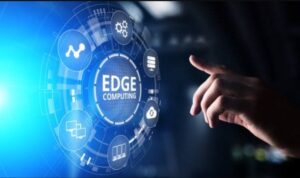
In the rapidly evolving digital landscape of 2025, one concept is standing out as a game-changer across industries: Edge Computing. As organizations strive for faster, smarter, and more secure systems, edge computing has emerged as a vital component of modern IT architecture, offering a transformative alternative to traditional cloud computing.
What is Edge Computing?
Edge computing refers to the practice of processing data closer to its source—whether it’s a smart device, a sensor, or a local server—instead of relying solely on centralized data centers. This decentralized approach reduces latency, minimizes bandwidth usage, and enables real-time responsiveness.
Unlike cloud computing, which transmits data to and from a distant server, edge computing brings computation and storage closer to the user or device. This proximity significantly enhances performance, especially for applications requiring real-time analysis and decision-making.
Why is Edge Computing Trending in 2025?
Several converging factors are pushing edge computing into the mainstream this year:
- Explosion of IoT Devices: With billions of connected devices generating massive volumes of data, traditional cloud models struggle to keep up. Edge computing offers a scalable solution to handle this data at the source.
- Real-Time Demands: Applications like autonomous vehicles, augmented reality (AR), smart factories, and telemedicine demand split-second responses that only edge processing can provide.
- Network Efficiency: By processing data locally, edge computing reduces the amount of data transmitted to central servers, easing the burden on networks and cutting operational costs.
- Data Sovereignty and Security: Edge computing allows sensitive data to remain local, aligning with regional compliance laws and improving privacy and security.
Key Industries Embracing Edge Computing
- Manufacturing: In smart factories, edge devices monitor machinery in real time, detecting anomalies and reducing downtime.
- Healthcare: Edge-enabled medical devices support faster diagnostics and remote patient monitoring, crucial for time-sensitive decisions.
- Retail: Stores use edge computing for smart inventory systems and personalized customer experiences, without needing constant cloud connectivity.
- Automotive: Self-driving vehicles process environmental data on-board, enabling real-time navigation and safety decisions.
Challenges and Considerations
Despite its advantages, edge computing comes with challenges. Managing a vast network of distributed nodes requires robust orchestration, security, and maintenance strategies. Interoperability between devices and systems also remains a key concern.
The Future of Edge
As 5G networks continue to expand and AI becomes more ubiquitous, edge computing will only grow in relevance. It serves as the backbone for emerging technologies like autonomous systems, mixed reality, and next-gen robotics.
In essence, edge computing is not just a trend—it’s a foundational shift in how we collect, process, and use data. By bringing computation to the “edge” of the network, businesses gain speed, agility, and a competitive edge in a data-driven world.
Conclusion
- Edge computing is redefining how technology interacts with the real world. In 2025, it’s not just a buzzword—it’s a strategic imperative. As companies navigate an increasingly complex digital environment, adopting edge computing is key to unlocking the potential of real-time, intelligent systems that can operate efficiently, securely, and autonomously.
